A Wide-Band Low-Profile Antenna for a High-Integration Phased Array System
Abstract
1. Introduction
2. Antenna Element Design and Analysis
2.1. Antenna Element Design
2.2. Several Engineering Problems including Production and Welding
2.3. Analysis and Verification of Parasitic Radiation Suppression
3. Manufacturing of an Antenna
4. Experimental Results
5. Conclusions
Author Contributions
Funding
Institutional Review Board Statement
Informed Consent Statement
Data Availability Statement
Conflicts of Interest
References
- Wheeler, H. The wide-band matching area for a small antenna. IEEE Trans. Antennas Propag. 1983, 31, 364–367. [Google Scholar] [CrossRef]
- Munk, B.; Taylor, R.; Durharn, T.; Croswell, W.; Pigon, B.; Boozer, R.; Brown, S.; Jones, S.; Pryor, J.; Ortiz, S.; et al. A low-profile broadband phased array antenna. In Proceedings of the Antennas and Propagation Society International Symposium, Columbus, OH, USA, 22–27 June 2003; pp. 448–451. [Google Scholar]
- Holland, S.S.; Vouvakis, M.N. A 7–21GHz Dual-polarized Planar Ultrawideband Modular Array. IEEE Trans. Antennas Propag. 2012, 60, 4589–4600. [Google Scholar] [CrossRef]
- Doane, J.P.; Sertel, K.; Volakis, J.L. A 6.3:1 bandwidth scanning Tightly Coupled Dipole Array with co-designed compact balun. In Proceedings of the IEEE International Symposium on Antennas and Propagation, Chicago, IL, USA, 8–14 July 2012; pp. 467–475. [Google Scholar]
- Kasemodel, J.A.; Chen, C.-C.; Volakis, J.L. Wide-band planar array with integrated feed and matching network for wide-angle scanning. IEEE Trans. Antennas Propag. 2013, 61, 4528–4537. [Google Scholar] [CrossRef]
- Novak, M.H.; Miranda, F.A.; Volakis, J.L. Ultra-wideband phased array for small satellite communications. IET Microw. Antennas Propag. 2017, 11, 1234–1240. [Google Scholar] [CrossRef]
- Yetisir, E.; Li, J.; Ghalichechian, N. UWB dual-polarised dipole array with dielectric and FSS superstrate and 65° scanning. IET Microw. Antennas Propag. 2019, 13, 313–321. [Google Scholar] [CrossRef]
- Kindt, R.; Mital, R.; Logan, J.; Lee, M.; Vouvakis, M. A 6:1 Bandwidth PUMA Array at 7 mm Scale. In Proceedings of the IEEE International Symposium on Phased Systems and Technology, Waltham, MA, USA, 18–21 October 2016; pp. 1–4. [Google Scholar]
- Logan, J.T.; Holland, S.S.; Schaubert, D.H.; Kindt, R.W.; Vouvakis, M.N. A Review of Planar Ultrawideband Modular Antenna Arrays. In Proceedings of the International Symposium on Electromagnetic Theory, Hiroshima, Japan, 20–24 May 2013; pp. 868–871. [Google Scholar]
- Jiang, Z.; Xiao, S.; Wang, B.-Z. A Low-cost Light-weight Ultrawideband wide-angle scanning tightly coupled dipole array loaded with multilayer metallic strips. IEEE Access 2021, 9, 24975–24983. [Google Scholar] [CrossRef]
- Angelotti, A.M.; Gibiino, G.P.; Nielsen, T.S.; Schreurs, D.; Santarelli, A. Wideband Active Load—Pull by Device Output Match Compensation Using a Vector Network Analyzer. IEEE Trans. Microw. Theory Tech. 2021, 69, 874–886. [Google Scholar] [CrossRef]
- Ding, G.; Anselmi, N.; Xu, W.; Li, P.; Rocca, P. Interval Bounded Optimal Power Pattern Synthesis of Array Antenna Excitations Robust to Mutual Coupling. IEEE Antennas Wirel. Propag. Lett. 2023, 11, 2725–2729. [Google Scholar] [CrossRef]
- Chen, G.; Qu, S. A Method for Processing Edge Truncation Effects in Small-scale Planar Phased array. In Proceedings of the National Conference on Antennas, Harbin, China, 20–23 August 2023; pp. 748–750. [Google Scholar]
- Lee, M.Y.; Kindt, R.W.; Vouvakis, M.N. Planar Ultrawideband Modular Antenna Wavelength-Scaled Array. In Proceedings of the IEEE International Symposium on Antennas and Propagation, Fajardo, PR, USA, 26 June–1 July 2016; pp. 435–436. [Google Scholar]
- Wang, Q.; Li, P.; Rocca, P.; Li, R.; Tan, G.; Hu, N.; Xu, W. Interval-Based Tolerance Analysis Method for Petal Reflector Antenna with Random Surface and Deployment Errors. IEEE Trans. Antennas Propag. 2023, 11, 8556–8569. [Google Scholar] [CrossRef]
- Zhu, L.; Wu, K. Complete model of Micro-strip fed slot radiator. Theory and experiments. IEEE Microw. Guide-Wave Lett. 1999, 9, 305–307. [Google Scholar]
- Yeo, J.; Lee, J.-I. High-Sensitivity Slot-Loaded Microstrip Patch Antenna for Sensing Microliter-Volume Liquid Chemicals with High Relative Permittivity and High Loss Tangent. Sensors 2022, 22, 9748. [Google Scholar] [CrossRef] [PubMed]
- Kindt, R.W.; Binder, B.T. Wideband Planar Printed Aperture on a Triangular Lattice for Millimeter Wave Applications. In Proceedings of the European Conference on Antennas and Propagation, Florence, Italy, 26–31 March 2023; pp. 1–3. [Google Scholar]
- Dang, W.; Yong, W.Y.; Glazunov, A.A. Cost-Effective Ultra-wideband Tightly Coupled Dipole Array (TCDA) with Low Profile. In Proceedings of the European Conference on Antennas and Propagation, Florence, Italy, 26–31 March 2023; pp. 1–5. [Google Scholar]

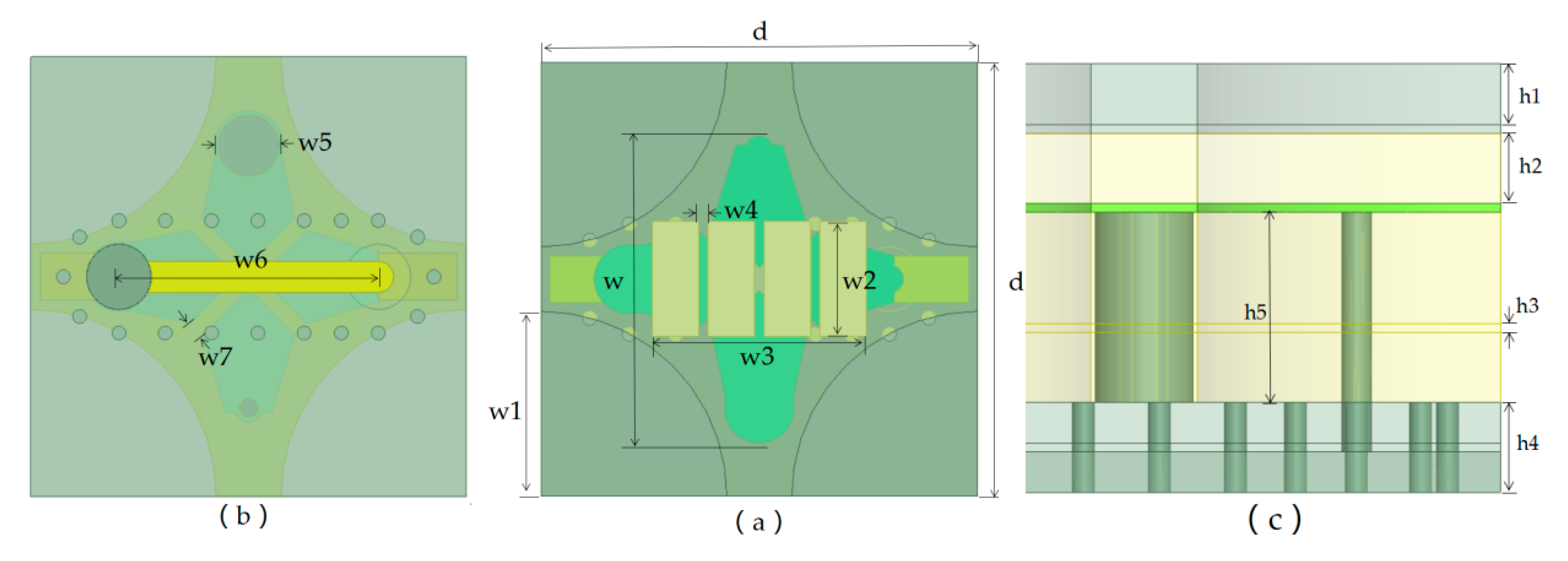




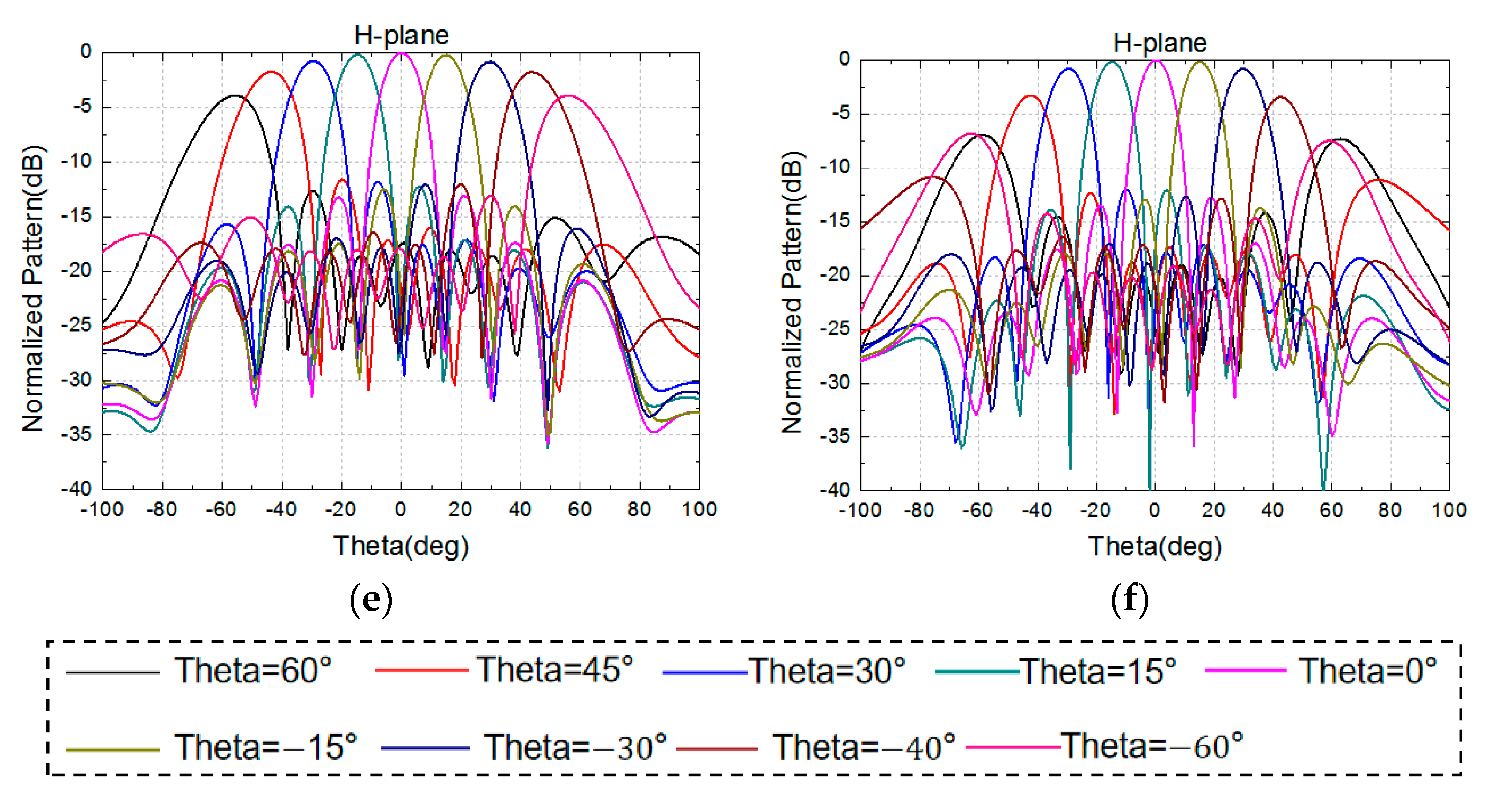
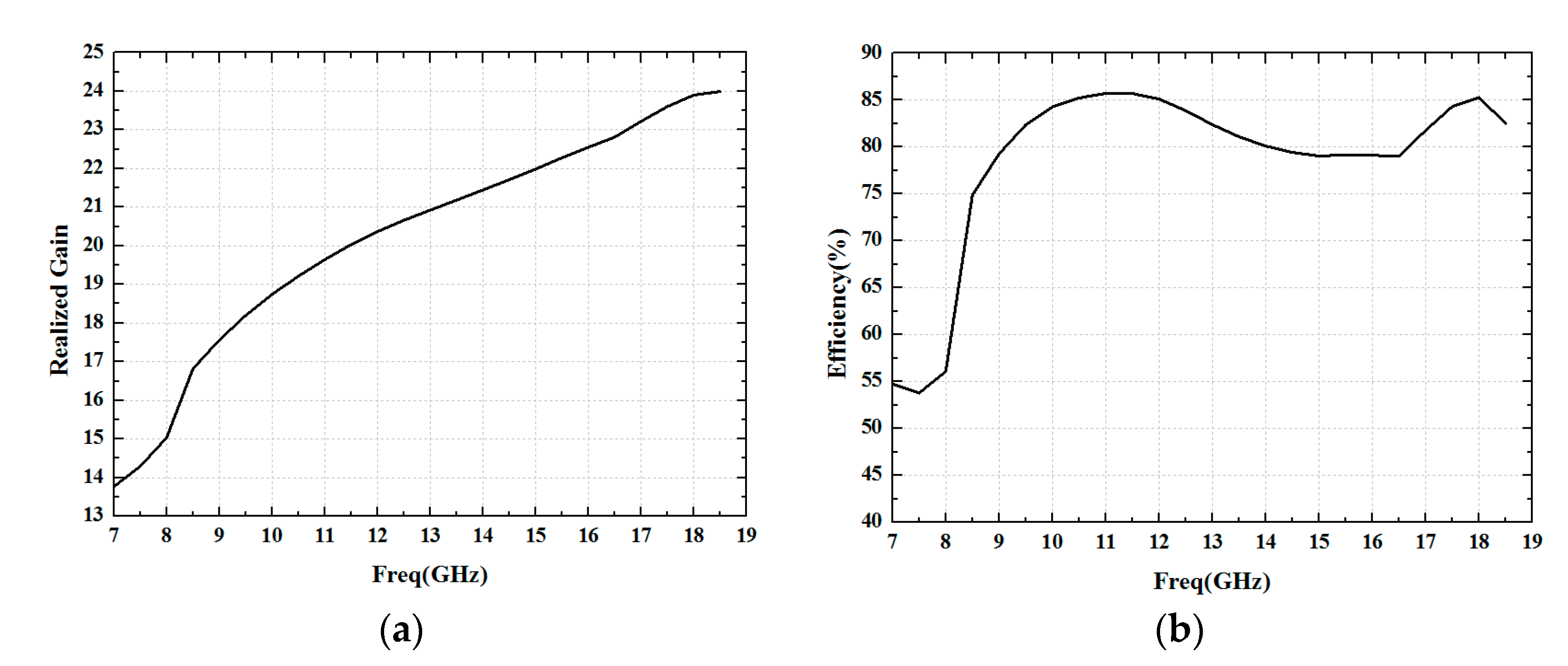


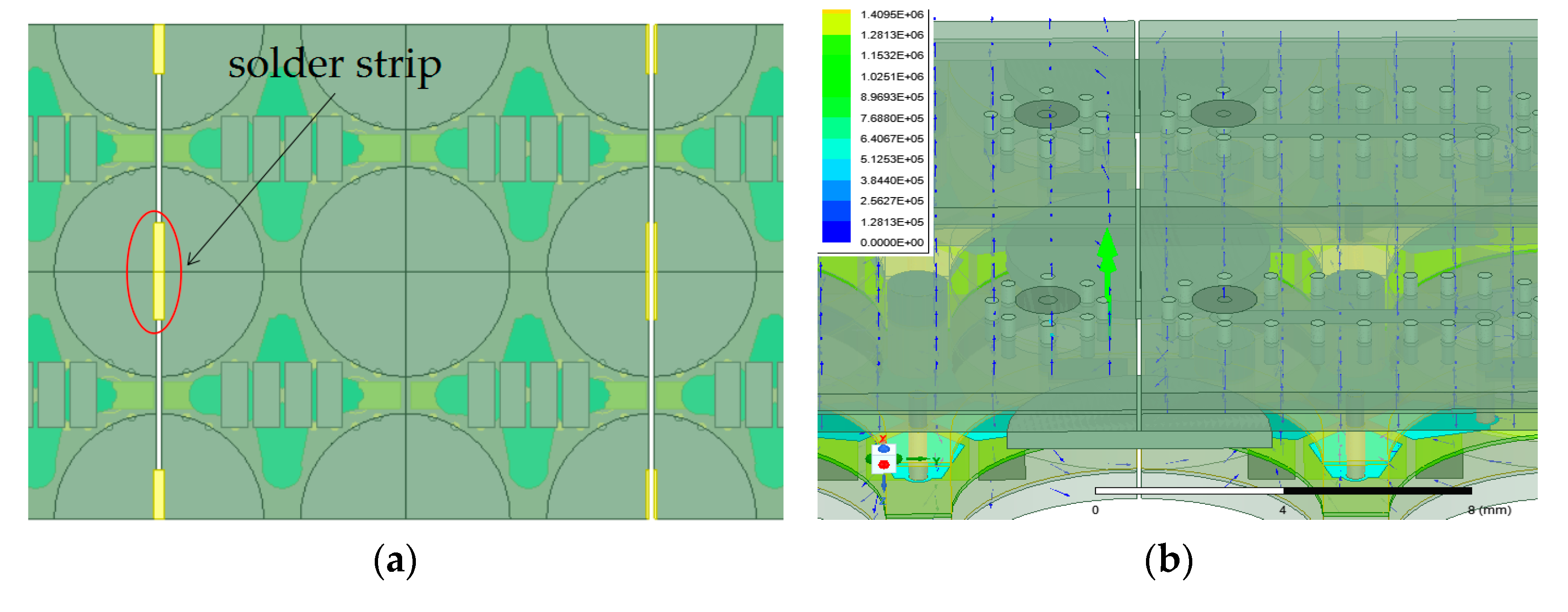

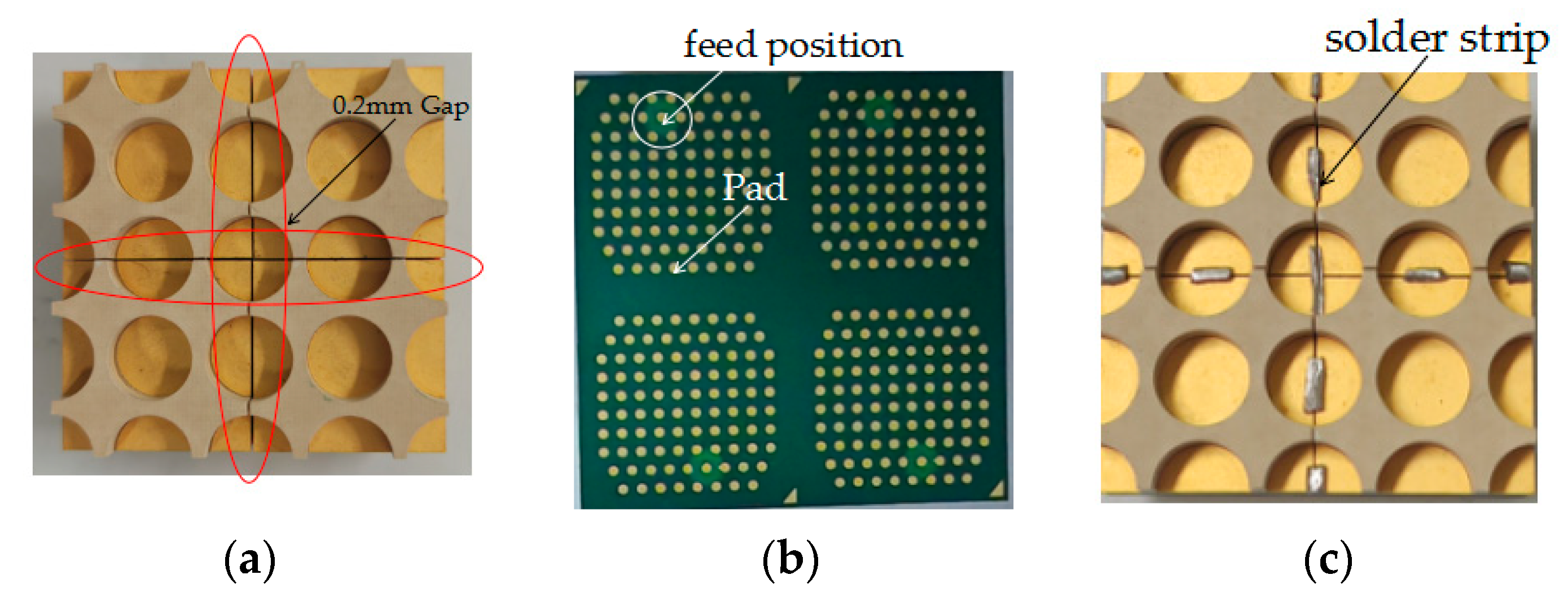
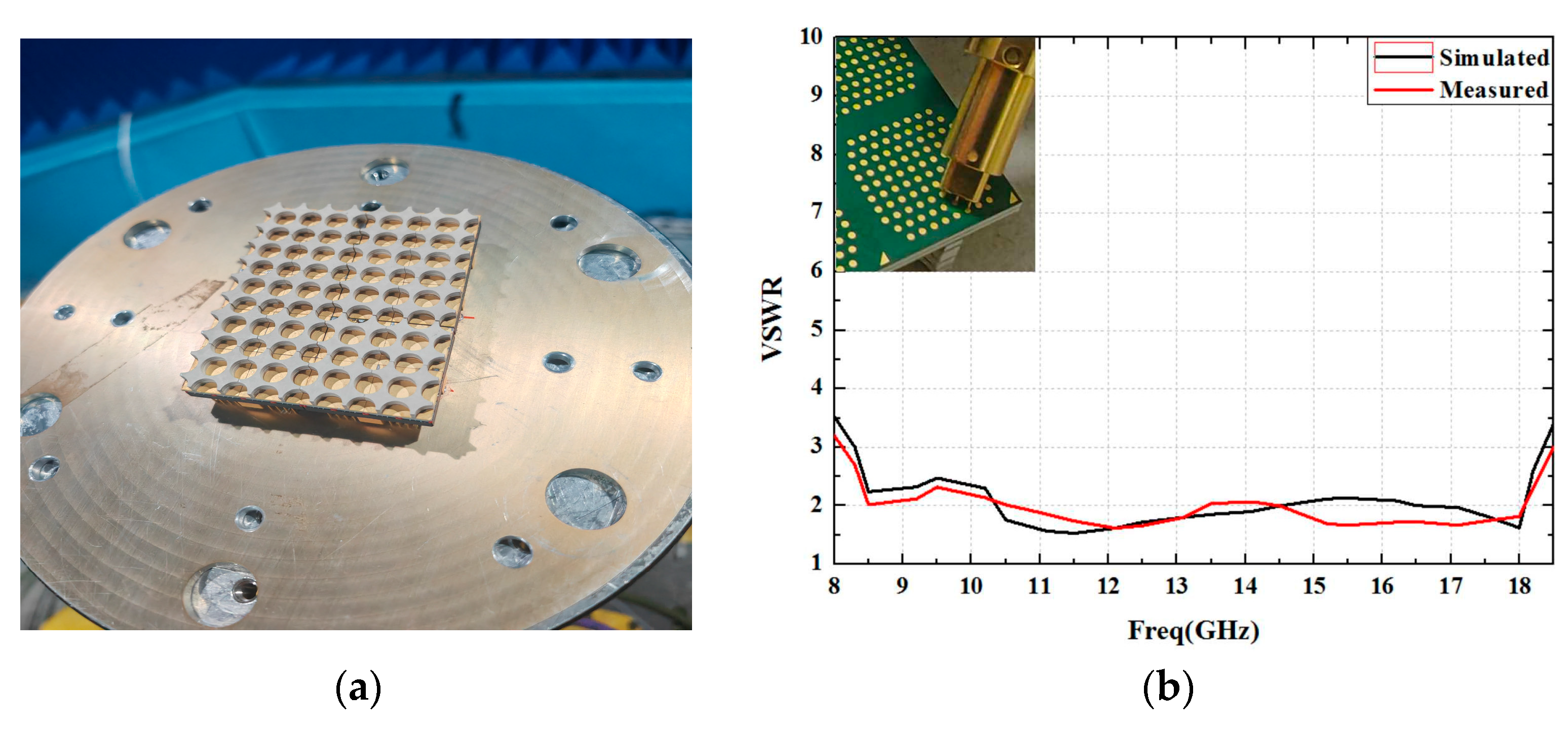
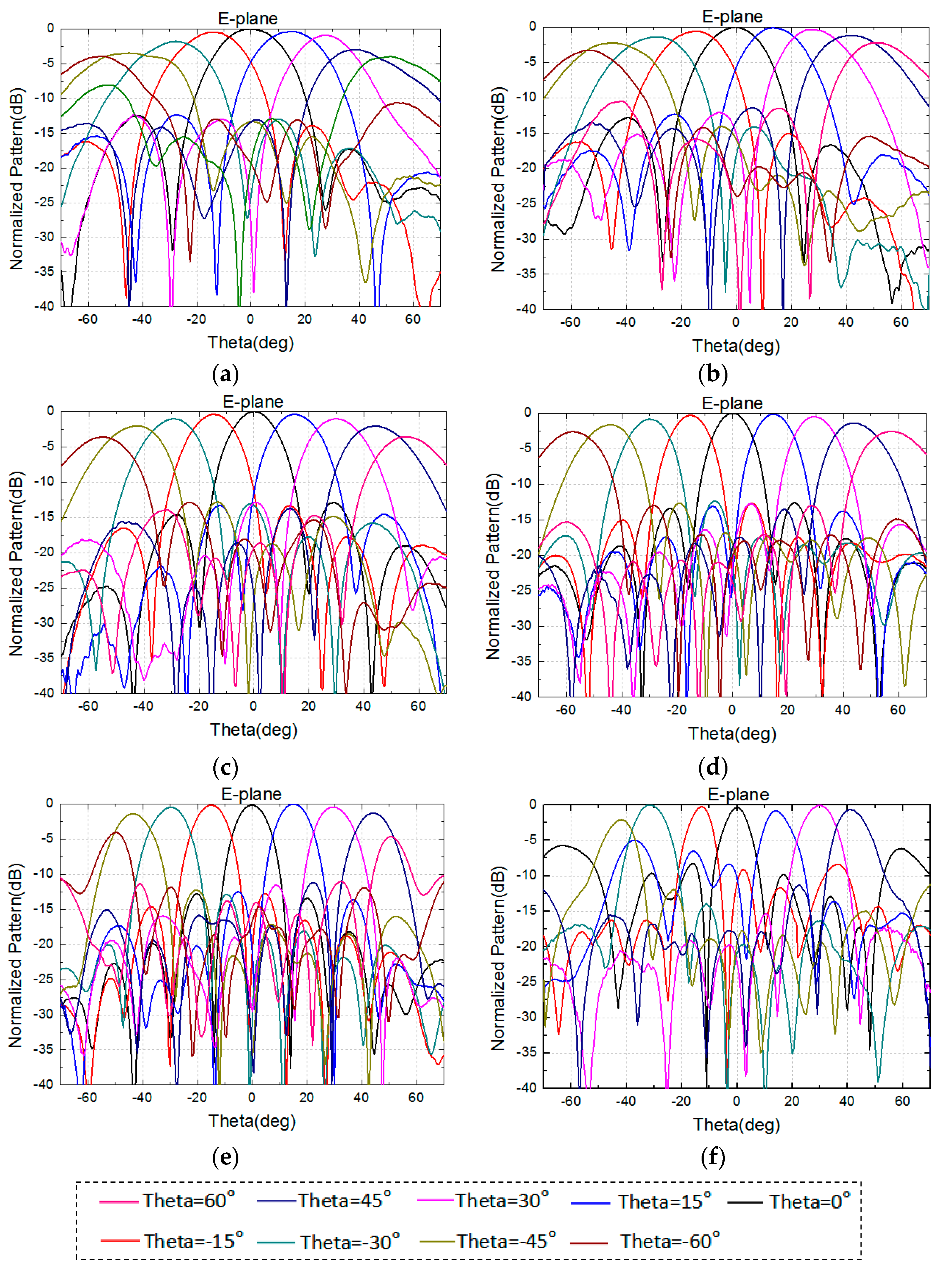
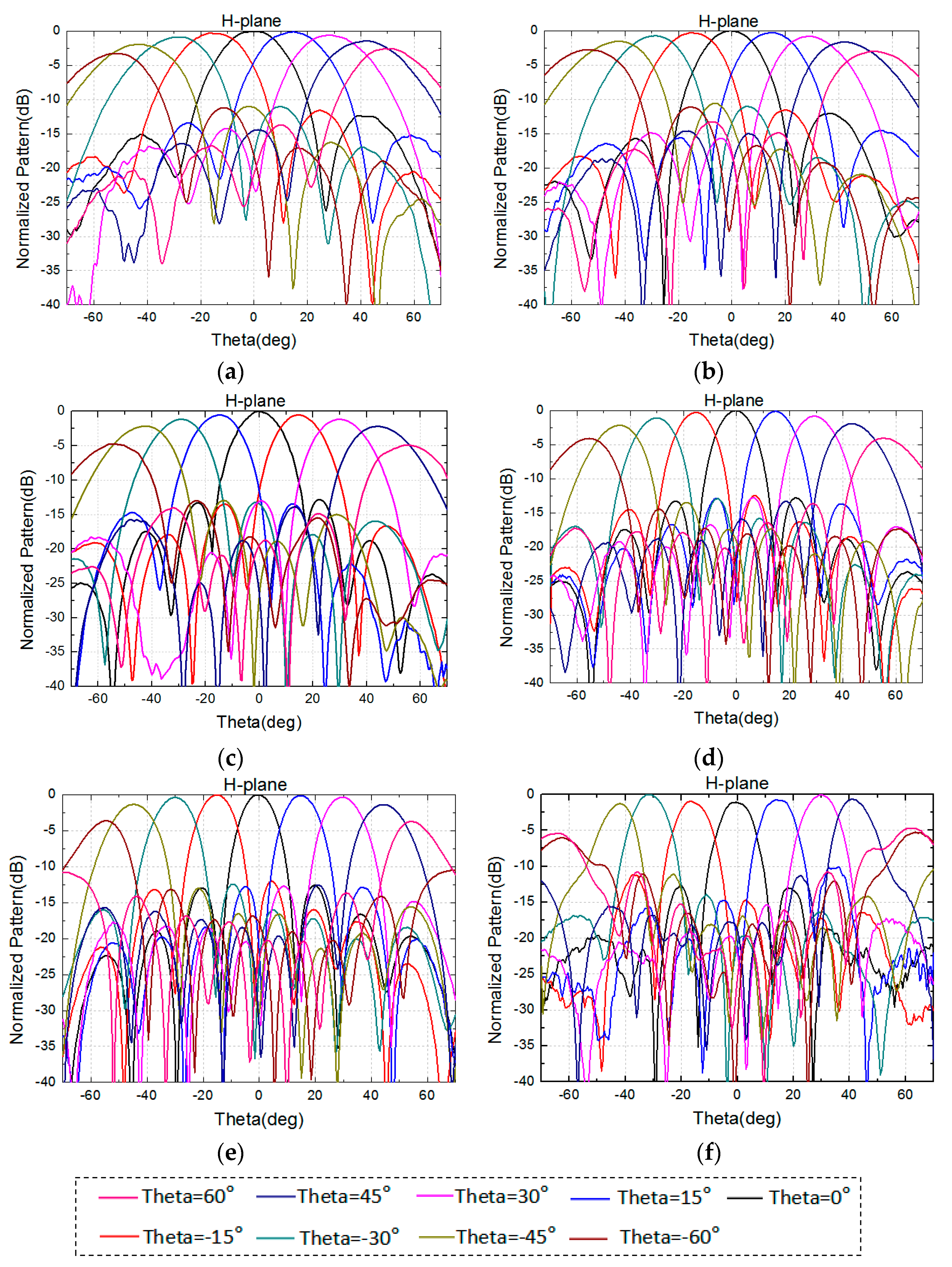
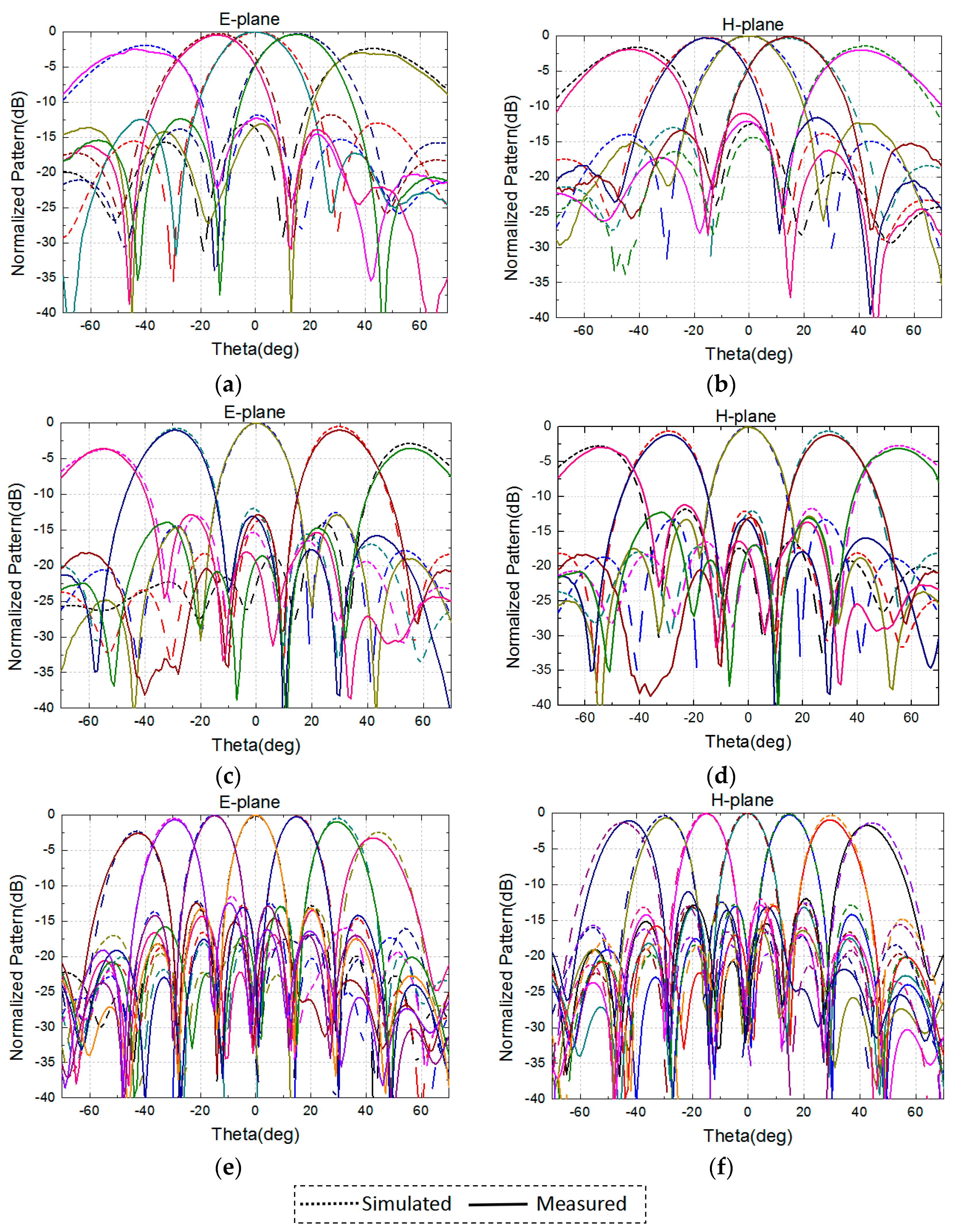
| Parameter | Value (mm) | Parameter | Value (mm) |
|---|---|---|---|
| h1 | 0.76 | w1 | 4.00 |
| h2 | 0.89 | w2 | 2.50 |
| h3 | 0.11 | w3 | 4.60 |
| h4 | 1.12 | w4 | 0.20 |
| h5 | 2.39 | w5 | 1.00 |
| d | 9.40 | w6 | 5.60 |
| w | 6.50 | w7 | 0.35 |
Disclaimer/Publisher’s Note: The statements, opinions and data contained in all publications are solely those of the individual author(s) and contributor(s) and not of MDPI and/or the editor(s). MDPI and/or the editor(s) disclaim responsibility for any injury to people or property resulting from any ideas, methods, instructions or products referred to in the content. |
© 2024 by the authors. Licensee MDPI, Basel, Switzerland. This article is an open access article distributed under the terms and conditions of the Creative Commons Attribution (CC BY) license (https://creativecommons.org/licenses/by/4.0/).
Share and Cite
Liu, H.; Liu, J.; Huang, J.; Han, C.; Chen, B.; Liu, Y.; Xiang, Y. A Wide-Band Low-Profile Antenna for a High-Integration Phased Array System. Sensors 2024, 24, 3295. https://doi.org/10.3390/s24113295
Liu H, Liu J, Huang J, Han C, Chen B, Liu Y, Xiang Y. A Wide-Band Low-Profile Antenna for a High-Integration Phased Array System. Sensors. 2024; 24(11):3295. https://doi.org/10.3390/s24113295
Chicago/Turabian StyleLiu, Haipeng, Juan Liu, Jin Huang, Chunhui Han, Bo Chen, Yuhe Liu, and Yujie Xiang. 2024. "A Wide-Band Low-Profile Antenna for a High-Integration Phased Array System" Sensors 24, no. 11: 3295. https://doi.org/10.3390/s24113295
APA StyleLiu, H., Liu, J., Huang, J., Han, C., Chen, B., Liu, Y., & Xiang, Y. (2024). A Wide-Band Low-Profile Antenna for a High-Integration Phased Array System. Sensors, 24(11), 3295. https://doi.org/10.3390/s24113295






